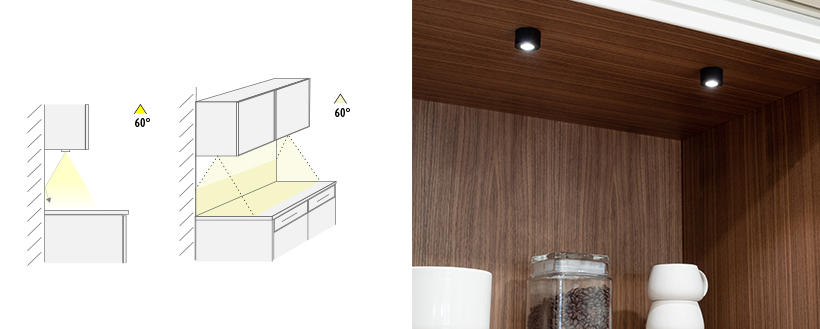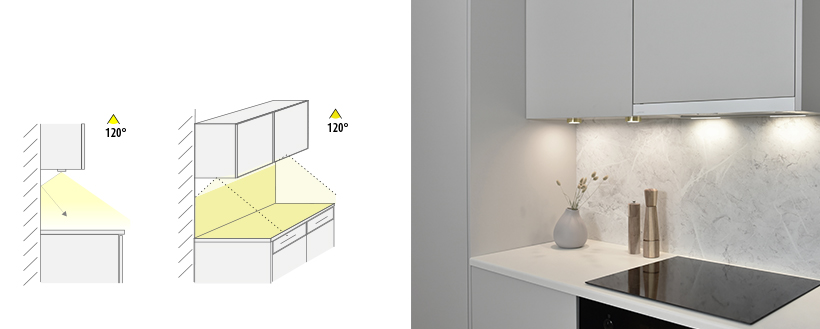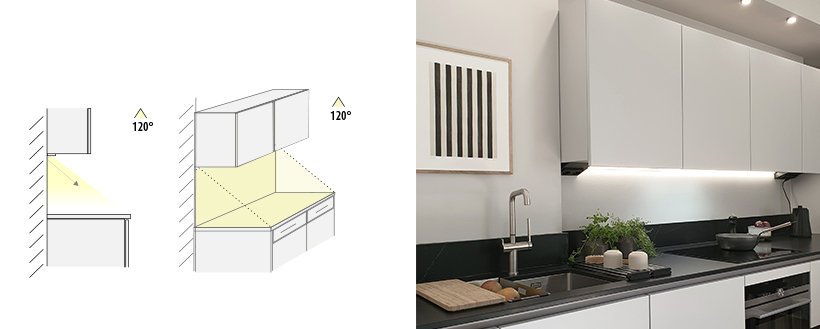No products
Prices are tax included
Luminous Flux
Lumen (lm) is the unit of the amount of light or luminous flux. The amount of light produced by energy-saving light bulbs, LEDs and energy-efficient halogen light bulbs cannot be compared on the basis of wattage, since they only refer to electricity consumption. This is the reason why lumen value is always presented in the light fixtures.
Lumen value makes it easier to compare the amount of light produced by different lights and helps to estimate how much LED light is needed. When considering the need for light, also consider the beam angle of the light to obtain a uniform light on the illuminated surface.
LIGHTING INTENSITY (LUX)
In addition to the luminous flux, the illuminance must also be taken into account, which indicates the amount of luminous flux applied to a certain surface area. Lighting intensity is used to describe how good the lighting conditions are in a room. The obtained value is related to the luminous flux of the lamp, the optical properties of the lamp and the distance of the lamp from the illuminating surface, and it tells, for example, how well you can see when working at the level of the intermediate space.
Below is how the light angle affects the lighting
Distribution of luminous flux on illuminated surfaces
Two different light fixtures are presented below.
The first example has a 60-degree beam angle. The light projected on the worktop is not distributed evenly across the whole worktop, and the indirect light reflected through the back wall is also focused on a very small area. When indicating luminous intensity (Lux), this creates a high value to the light since the light is focused on a small area.
However, this usually isn’t the desired end result for the user.
 __________________________________
__________________________________
The second example has a 120-degree beam angle. The light is projected across the whole worktop. In addition, for example, hands cause minimal shadows, as the indirect light reflected through the back wall covers a large portion of the worktop. To achieve sufficient luminous intensity requires a higher luminous flux to provide adequate illumination throughout the space.
From the user’s point of view, the lighting is pleasant and efficient enough everywhere on the worktop.
 __________________________________
__________________________________
The third example also has a 120-degree beam angle, but this time the light fixture is installed near the back end of the upper cabinet. The light is projected across the whole worktop but the front edge of the worktop receives about half the amount of light compared to the amount of light in the back end of the worktop. Hands, for example, cause minimal shadows also in this installation option, since the indirect light reflected through the back wall covers a large portion of the worktop. To achieve sufficient luminous intensity requires a higher luminous flux to provide adequate illumination throughout the space.
From the user’s point of view, the lighting is pleasant and efficient enough everywhere on the worktop.

Check the amount of light
The equivalences between incandescent light bulbs and LED and energy-saving light bulbs are listed below. For example, a 40-watt incandescent light bulb is equivalent to an LED or energy-saving light bulb of 470 lumens. Unlike halogen and energy-saving light bulbs, LEDs are rarely defected. When halogen and energy-saving light bulbs come to the end of their lifespan once the light source breaks down, LEDs are characterized by a decrease in luminous flux over time.
| INCANDESCENT BULB | LED AND ENERGY-SAVING BULB |
| Power, watt | Luminous Flux, lumen (lm) |
| 15 | 140 |
| 25 | 250 |
| 40 | 470 |
| 60 | 800 |
| 75 | 1050 |
| 100 | 1520 |